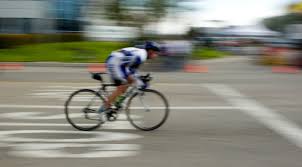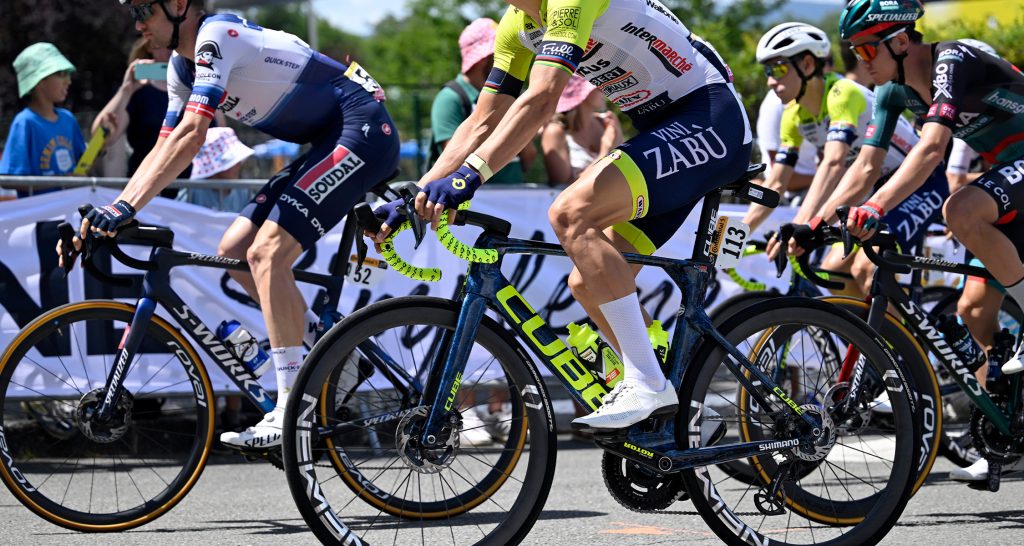Integration Of AI For Predictive Training
The future of cycling with power meters is a deeply integrated power meters approach with the help of artificial intelligence (AI) in order to improve the quality of the training more efficiently. An AI algorithm can process terabytes of data from previous rides, taking into account factors such as effort (from heart rate and power output) and weather conditions. This allows these systems to create personalized training plans that anticipate and maximize the performance of the cyclist for future events.
AI Applications
Take, professional cycling teams like Team INEOS who are using AI-driven software in this manner. By applying predictive models they will adapt training loads and recovery periods on the fly, based on data analysis in real-time. It might recommend the changing of intensity during a pre-season training camp based on unexpected weather patterns or the physiological response of the rider ensuring that they perform the best they can without the risk of overtraining.
Data-Driven Improvement in Training
Imagine a cyclist is looking to increase their performance in a time trial. Artificial intelligence can break down every second of their training rides, tying specific power outputs and cadences to gains in speed and endurance. This data is used to tailor hyper-specific workouts that address the smallest of weaknesses in the cyclist’s profile, issues that might slip through the coaching cracks otherwise.
How To Implement AI In Cycling
It’s a process that begins with the gathering of data through sensors and wearables. The next step was to upload this data to a cloud based platform where AI algorithm would run a series of analyses on performance trends to extract actionable insights. The cyclist and — if they have a coach using the system — the coach then receives these insights through an app[sic] or software interface delivering guidance for their next training.
Augmented Reality Apps For Interactive Training
AR is changing how cyclists use power meters to train with a more engaging and interactive experience. AR applications, being capable of overlaying real-time data and virtual elements upon the user’s field of vision, will embody the real-world and digital feedback, ultimately solidifying the training experience.
Example of AR in Cyclist Training
Someone on a bicycle with a specialized helmet that provides their current power output, heart rate, and other performance analytics right on top of the world they are seeing. This system can also cast virtual pacers or ghost riders that mimic the cyclists’ previous rides or goal times. This gives the cyclist something to race against visually, creating a more entertaining and goal-directed training.

Data Integration and Immediate Feedback
Using power meters, heart rate monitors, GPS devices, and other sensors, AR apps can consolidate the information on one display offering more robust real-time analytics. If a cyclist starts losing power output in the middle of a climb, the AR system can be used to either give constant motivational cues or even suggest adjustments like “Bump power up to 250 watts” to assist in keeping a steady state effort throughout the rest of the ride.
Implementation Steps of AR in Cycle Training
Installation: Add AR-compatible technology and sensors to the bicycle and helmet
This involves calibrating the data— making sure that all devices are synced up so that no data is lost between transmission and display
Training Execution: Commenced a training session whereby AR visualizations to direct the cyclist across a scripted workout or race course element.
Feedback Analysis: Post-ride review for cyclists and coaches to evaluate what exactly they did, while performing against the AR scenarios to improve on areas in the future.
The Growth Of Community-Based Data Sharing
But the cycling community is turning more and more to data exchanges, and other companies offer similar services to improve training outcomes or connect riders further. The platforms let cyclists upload and benchmark performance metrics like power output and ride times against peers from all over.
Advantages of Sharing Data in Bike
Data repositories like this help cycling enthusiasts at any level get the benchmarks and insights usually available only to high-performance athletes with professional coaching support. An amateur cyclist, can compare his power output with other amateurs in the same age and weight class to better adjust his training loads or see his progress in more practical terms.
Illustration Of Community Data Usage
From Strava to Zwift, user generated data helps to create segment leaderboards and virtual races that are open for everyone to sign up to 24/7. It is possible to compare in real time the performance metrics and the formation of cyclists in these environments. This not only inspires riders, but it makes high level training data available, allowing users to easily relate and adapt their tactics.
Data- As A Platform
User Signup: Cyclists can register and their devices are linked.
Data Upload: After every ride, data from power meters and other sensors is pushed up to the cloud.
Data Analysis: This data is analyzed by the algorithms and the feedback of the performance and rating is given.
Community Engagement: Cyclist can interact with their data with comments, challenges, shared experiences.
Developments In Nano-Technology For Power Meters
With nano-technology increasingly being adopted power meters are being designed and function better and better, becoming more precise, less obtrusive, and lighter to aid in scientific power-based training for cyclists. Developments in nano-materials and micro-electromechanical systems (MEMS) make possible power meters that are not just more accurate through integration with cycling parts,
Advancements done in Nano-Materials to make Power Meters
The use of nano-materials have enabled strain gauges between 5~10 times more sensitive than conventional ones. The gauges are made of carbon nanotubes and graphene, two materials with excellent electrical and mechanical characteristics. A power meter fitted with these high-spec strain gauges can notice change in force at a very miniscule level enabling more precise power readings across a broader range of conditions.
What It Means for Training & Racing
The additional accuracy, enabled by nano-technology, helps cyclists to calibrate their effort levels better during training and races. Imagine a bicyclist who is gearing up for a long uphill slog. The improved power meter offers instantaneous feedback of the rider’s power output, so they can ride in their desired power zone without excess effort.
As an Example the Implementation Process of Nano-Tech Power Meters
Design and materials: Engineers will select the appropriate nano-materials and design the micro-components of the power meter.
High Quality Manufacturing and Calibration: Every part is manufactured using high technology machinery for precision and is calibrated for consistent performance.
Name: Integration process and testingDescription: The power meters are integrated into bike components (e.g. crank arms/pedals) and are then ridden hard to the ground for testing.
Test-To-Market/User Feedback: After the units are tested, power meters are released to the market. The feedback provided by the users can then be used to further refine the product.
Regulatory Changes And Fair Use In Competitive Settings
But with power meters now nearly standard in the peloton, governing bodies are increasingly updating rules to keep up with the advent of new ways to improve rider performance. The changes largely center around integrating standard equipment for competition to keep things fair and prevent any unforeseen advantage from proprietary technology.

A New Bar for Power Meter Accuracy and Reliability
New standards are being introduced by regulatory bodies such as the Union Cycliste Internationale (UCI) for all power meters used in competition, which must meet the highest levels of accuracy and reliability. Power meters now must show a variance of less than 1% in power readings to be quite simply ready for business level use. This helps to level the playing field, as much as possible (see “The Problem of Equal Data Submissions”)
Impact on Equipment Manufacturers by Regulations
This has led to increased investment in R&D for manufacturers to produce power meters that not just meet, but exceed the specified standards. A major player recently released a power meter equipped with state-of-the-art calibration methods and environmental compensation algorithms that guarantee the best performance in any weather or altitude.
Processes for Implementation and Compliance
Regulatory Approval > The new standards must be met and will require manufacturers to have devices tested and certificated as compliant.
Cycling Team Compliance: Prior to cycling competitions, each team must register gear with relevant governing bodies to confirm that they abide by regulatory conditions.
An On-Going Testing: officials can test gear during matches at random to ensure they meet the standards.





